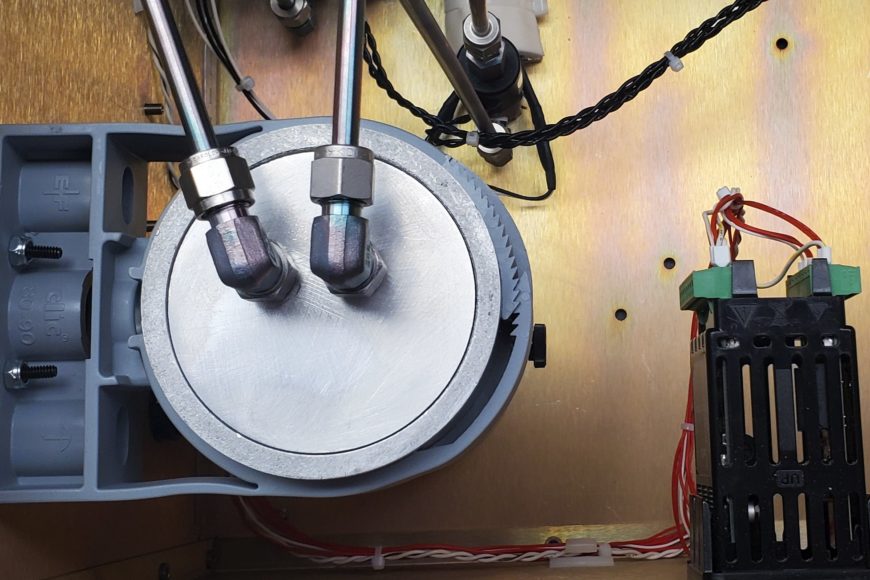
Permeation systems are devices that are both simple and effective, employed to produce exacting gas blends for a broad spectrum of uses. Users generally choose permeation if low-level concentrations of gas mixtures are required or when the required gases are not easily available in bulk forms.
Some of the key applications of permeation systems will be outlined in this blog post.
How do Permeation Systems Work?
To understand their applications, it’s important to first understand how permeation systems work. Each permeation system consists of four key areas which are:
- Temperature controllers
- A permeation oven
- Mass flow controllers
- Disposable permeation tubes
Mass flow controllers regulate carrier gas that flows through the permeation ovens whilst the process temperature is laid out by the temperature controller.
Permeation systems are different from conventional gas mixers as the permeators they use come in the form of liquid-filled polymeric tubes. These tubes are disposable or refillable and are placed inside the oven, containing the liquid phase of the compound.
Permeation Systems for Landfill Gas Recovery
Gas that is produced in landfills contains high levels of methane, CO2, and trace contaminants. The raw gas is typically collected under a vacuum and transferred for contaminant removal and gas separation. Generally, this is done using the Selexol process, however, using permeation systems provides a more cost-effective and efficient means of separating the gas.
Using Permeation Systems to Remove O2 from Fractured Wells
Permeation systems are used to purify gas streams containing carbon dioxide in the gas produced from a fractured well. When a tight gas deposit is opened by injecting high-pressure carbon dioxide and water into the well to fracture the formation. In a standard well fracture, high levels of carbon dioxide are used, which means the gas is unsuitable for sale to the pipeline. Permeation systems are used to reduce the CO2 levels and assist them in returning to pipeline quality.
Permeation Systems for Hydrotreater Hydrogen Recovery
An increasing amount of hydrogen is being required in oil refinery operations as hydrotreaters are upgrading for processing heavier and increasingly sour crude oils. Recovering hydrogen from purge gases throughout the refining process provides an inexpensive source of hydrogen for such purposes. Permeation systems can be used to remove hydrogen from the purge gases in a relatively inexpensive manner.
Benefits of Using Permeation Systems for Gas Recovery Applications
Permeation systems are fitted with strong polymeric permeators that produce exacting concentrations of volatile compounds. High vapor pressure compounds are generated on-demand for optimal convenience.
Other forms of mixing can be inaccurate at low or trace levels, and can often be susceptible to adsorption on cylinder walls. It is almost impossible to fully eliminate trace components from gas cylinders, however using permeation systems can solve this issue and offer reliable, high-purity gas mixes.
If you’d like to find out more about how permeation systems work, Environics are an industry leader in the production and distribution of custom blending solutions. Visit the website for more information about permeation systems and their applications.

